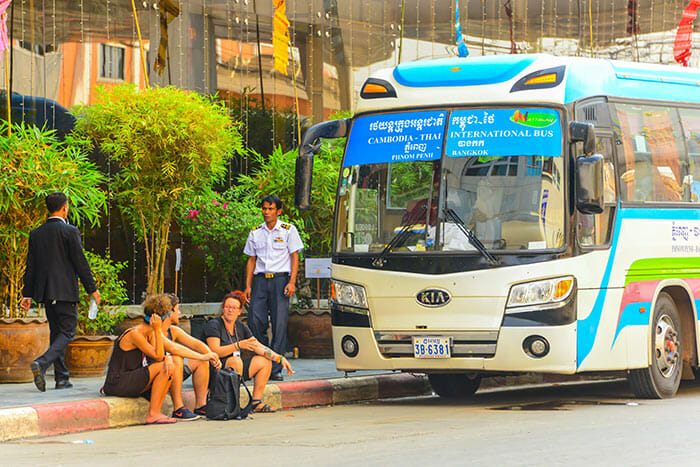Phnom Penh is the capital and largest city of Cambodia, while Siem Reap is the gateway to the ancient temples of Angkor. If you are planning to visit both cities, you may wonder how to travel from Phnom Penh to Siem Reap (or vice versa).
In this article, we will compare the different options available, including their pros and cons, costs, and durations.
By Bus
Taking a bus is the most common and cheapest way to travel from Phnom Penh to Siem Reap. There are many bus companies that operate this route, such as Giant Ibis, Mekong Express, Virak Buntham, and Cambodia Post VIP Van. The buses are usually comfortable and air-conditioned, and some of them offer free wifi, snacks, and water. The bus journey takes about 6 hours, depending on the traffic and road conditions. The buses usually depart from the city center or near the riverside in Phnom Penh, and arrive at the bus station or near Pub Street in Siem Reap. The bus tickets cost between $10 to $18 per person, depending on the bus company and the type of seat. You can book your bus tickets online in advance or through your hotel or a travel agent in Phnom Penh.
Pros: Cheap, convenient, scenic
Cons: Slow, crowded, bumpy

By Minivan or Taxi
If you prefer a faster and more private option, you can also take a minivan or a taxi from Phnom Penh to Siem Reap. A minivan is a small bus that can fit up to 12 passengers, while a taxi is a car that can fit up to 4 passengers. Both options are faster than a bus, taking about 5.5 hours to reach Siem Reap. However, they are also more cramped and less comfortable than a bus, especially if you have a lot of luggage. A minivan or a taxi can pick you up from your hotel or any location in Phnom Penh, and drop you off at your hotel or any location in Siem Reap. The minivan or taxi fares range from $10 to $13 per person for a shared ride, or from $70 to $100 for a private ride. You can book your minivan or taxi online in advance or through your hotel or a travel agent in Phnom Penh.
Pros: Fast, flexible, private
Cons: Expensive, cramped, less comfortable

By Flight
The fastest and most convenient way to travel from Phnom Penh to Siem Reap is by flight. There are several domestic airlines that fly between the two cities, such as Cambodia Angkor Air, Lanmei Airlines, JC International Airlines, and Bassaka Air. The flight takes only about 55 minutes, and you can enjoy the aerial view of the countryside and the temples along the way. The flights depart from Phnom Penh International Airport and arrive at Siem Reap International Airport. Both airports are located about 10 km from the city center, and you can easily find a tuk-tuk or a taxi to take you there or from there. The flight tickets cost between $100 to $200 per person, depending on the airline and the season. You can book your flight tickets online in advance or through your hotel or a travel agent in Phnom Penh.
Pros: Fastest, easiest, comfortable
Cons: Most expensive, unreliable

By Ferry
Another option to travel from Phnom Penh to Siem Reap is by ferry. This option is only available during the rainy season (from June to November), when the water level of the Tonle Sap Lake is high enough for navigation. The ferry is a large boat that can carry up to 150 passengers, and it offers a scenic and relaxing way to enjoy the natural beauty of Cambodia. The ferry journey takes about 8 hours (or more if there are delays), and it passes through several villages and floating communities along the way. The ferry departs from the ferry port near Sisowath Quay in Phnom Penh, and arrives at the ferry port near Chong Khneas in Siem Reap. Both ports are located about 15 km from the city center, and you can easily find a tuk-tuk or a taxi to take you there or from there. The ferry tickets cost about $35 per person, and they include a simple lunch on board. You can book your ferry tickets online in advance or through your hotel or a travel agent in Phnom Penh.
Pros: Scenic, relaxing, unique
Cons: Slowest, seasonal


